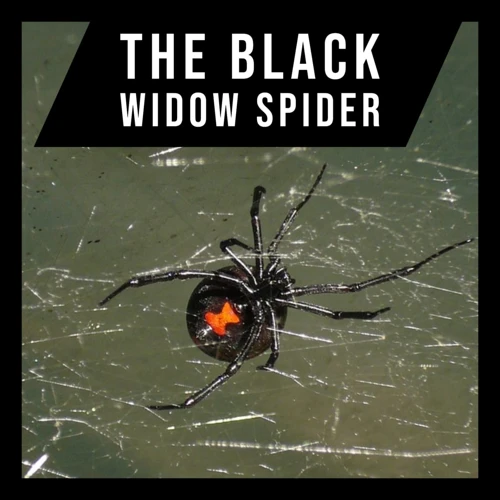The social behavior of Black Widow Spiderlings is a fascinating topic that has caught the attention of researchers and enthusiasts alike. Despite being known for their solitary nature as adults, these spiders display complex social interactions during their early developmental stages. From communication and coordination to competition and cannibalism, the behavior of Black Widow Spiderlings provides valuable insights into the evolution of social living and the factors that shape it. In this article, we will explore the remarkable life cycle and social behavior of Black Widow Spiderlings, and delve into the benefits, costs, and implications of their group living. Join us on this journey of discovery and wonder.
Life Cycle of Black Widow Spiderlings
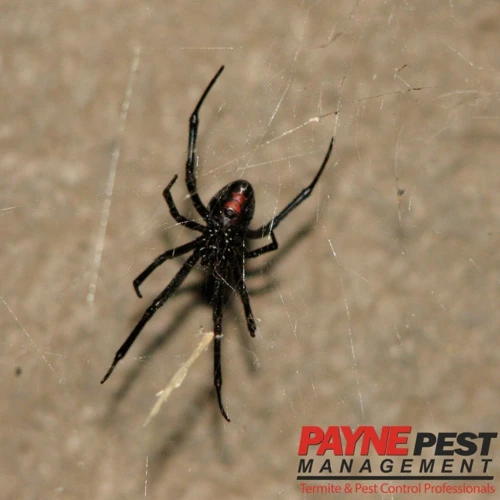
The life cycle of Black Widow spiderlings is an intriguing and perplexing process. From hatching to adulthood, these tiny arachnids undergo a series of transformations that require unique living and behavioral adaptations in order to survive. The development of these spiderlings is influenced by a number of factors such as the environment, competition, and genetics. Understanding this process is crucial in order to protect and conserve these fascinating creatures. Let’s take a closer look at the different stages of their life cycle.
Hatching and Early Development
During the hatching and early development stage, Black Widow spiderlings are completely dependent on their mother for survival. They emerge from the egg sac in groups of 100 to 400 and remain clustered together for several days until their first molt, which occurs within a week of hatching. During molting, the spiderlings shed their exoskeletons to grow, and this process continues as they mature into adulthood.
The newly hatched spiderlings are translucent white and only a few millimeters in length. They are unable to see, and their bodies are soft and vulnerable. As they begin to transition to their next stage of development, the spiderlings start to darken in color and become more mobile.
Black Widow spiderlings are cannibalistic, which means they often prey on their siblings or other small insects for sustenance. This behavior is believed to help weed out the weaker individuals and ensure the survival of the fittest. However, studies have shown that when food is abundant, they are less likely to exhibit cannibalistic behavior.
Predation and environmental factors can also play a role in the survival of Black Widow spiderlings. They are preyed upon by birds, lizards, and other insects, and their survival rate can be impacted by temperature, humidity, and access to shelter. Being part of a group can have both benefits and drawbacks, as competition for resources and mating opportunities can arise.
The hatching and early development stage of Black Widow spiderlings is a crucial period for their survival and growth. Molting allows them to grow and develop into mature adults capable of hunting and reproducing, while predation and environmental factors can hinder their survival. The cannibalistic behavior of Black Widow spiderlings also plays a role in their development, as it helps to ensure that only the fittest individuals survive and go on to contribute to the population.
Maturation and Adult Emergence
Maturation and adult emergence in black widow spiderlings mark the transition to full adulthood. During this stage, spiderlings rapidly grow and develop, shedding their exoskeletons several times before reaching maturity. The maturation period is crucial for their survival and success as adult black widow spiders.
The process of maturation:
- Spiderlings go through several molting stages before becoming adults. Molting is the process where the spiders shed their exoskeleton to allow for growth and development.
- It usually takes around two to three months for spiderlings to reach full adult maturity.
- As spiderlings grow, they develop the characteristic black and red coloration of adult black widow spiders.
- At the end of maturation stage, the spiders emerge as fully grown and sexually mature adults.
There are several factors that influence the maturation and adult emergence of black widow spiderlings. These include the spiderlings’ diet and hunting habits, the impact of the environment on their health, and the presence or absence of male spiders.
One of the major factors that affect maturation and adult emergence is the spiderlings’ diet. Black widow spiderlings are carnivorous and require a steady supply of insects for their growth and development. They are also known to engage in cannibalism where they prey on smaller spiderlings. A sufficient diet and hunting abilities ensure that the spiderlings have enough energy and nutrients to undergo the maturation process and emerge as healthy adults.
The environment also plays a significant role in the maturation of black widow spiderlings. Environmental factors such as temperature and humidity can influence their growth and development, as well as their susceptibility to diseases and predators. Exposure to harsh environmental conditions can lead to stunted growth, weakened immune systems, and reduced survival rates among spiderlings.
The presence or absence of male spiders also affects the maturation of black widow spiderlings. Male black widow spiders are known to provide food and protection to females and their offspring. The absence of males may result in lower survivability rates and increased susceptibility to predation and starvation.
The maturation and adult emergence stage of black widow spiderlings is a critical period for their survival and success as adult spiders. A healthy and stable environment, sufficient diet and hunting abilities, and the presence of male spiders all play a role in their maturation and development process. It is important to keep these factors in mind when considering the conservation and research of black widow spiders.
Solo versus Group Living
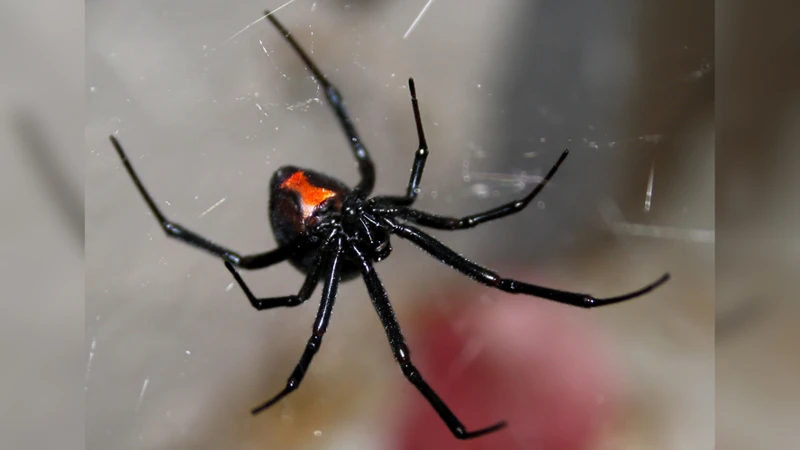
For Black Widow spiderlings, the decision to live alone or in a group has significant implications for their survival. When spiderlings hatch, they are not yet capable of hunting and fending for themselves, so they must rely on their siblings for protection and food. This initial group living period involves cooperation and mutual care among the spiderlings. However, as they mature, the spiderlings must eventually disperse and become independent individuals.
The Benefits of Group Living: Living in a group provides several benefits for Black Widow spiderlings. Firstly, group living provides better protection against predators. The larger group size means that there are more individuals available to fend off predators and to sound the alarm when danger approaches. Secondly, group living can also provide better access to resources, such as food and shelter. Spiderlings living in groups can cooperate to capture larger prey, and they can share the spoils among the group. Additionally, group living can facilitate learning and socialization, which is especially important for young spiderlings who need to learn hunting and survival skills quickly.
The Costs of Group Living: However, living in a group also comes with costs. One major cost is increased competition for resources within the group. Spiderlings may compete for food and shelter, and aggressive siblings may even cannibalize weaker ones. Another cost is increased risk of disease and parasite transmission within the group. Spiderlings living in close proximity to each other are more likely to contract and spread infections.
Factors Influencing Solo or Group Living: The decision to live alone or in a group can be influenced by environmental and social factors. For example, in habitats with abundant resources, spiderlings may be more likely to live alone. Additionally, the presence or absence of predators can also affect the decision to live in a group. Social factors, such as relatedness and familiarity with other spiderlings, can also play a role in the decision to live in a group.
The decision to live alone or in a group affects the social behavior of Black Widow spiderlings. While group living provides several benefits, it also comes with costs. The factors influencing the decision to live alone or in a group are complex and depend on a variety of environmental and social cues. Understanding the social behavior of Black Widow spiderlings can provide insight into their ecology and evolution, and can inform conservation and management practices.
Maturity is an important factor in the decision to live alone or in a group. As spiderlings grow and develop, they become more capable of fending for themselves, and may therefore choose to live alone.
Communication and Coordination
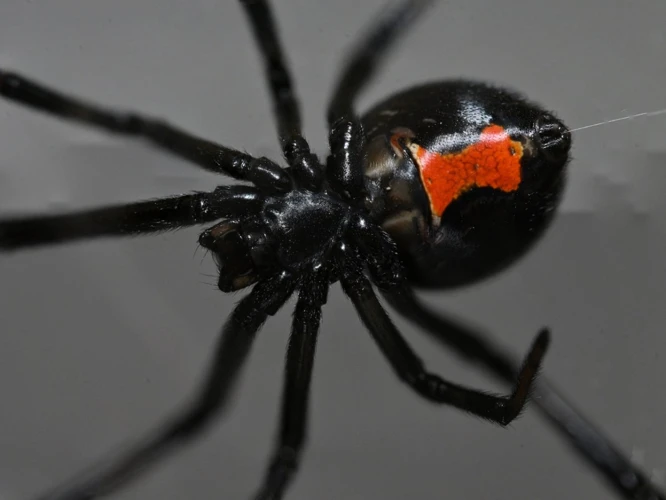
Communication and coordination play a vital role in the social behavior of black widow spiderlings. These tiny creatures have incredibly complex cognitive abilities, which allow them to interact and engage with other members of their group. They rely on several modes of communication, including visual and tactile cues to coordinate their behavior and respond to environmental stimuli. The ability to communicate and cooperate with other spiderlings is thought to provide benefits in terms of survival and reproductive success, which we will explore in this section. Let’s delve deeper into the fascinating world of communication and coordination in black widow spiderlings. To learn more about black widow spiderling behavior, check out our article on the life cycle of black widow spiderlings.
Visual and Tactile Communication
Black widow spiderlings are known for their ability to communicate and coordinate with each other. They use both visual and tactile signals to communicate within the group and to respond to potential threats from the outside world.
Visual communication plays an essential role in social behavior of black widow spiderlings. They use visual cues to recognize their siblings and distinguish them from strangers. The spiderlings also use their vision to move in groups, hunting for food, and avoiding the predators. They can communicate their intentions through postures and movements; for example, a relaxed and still posture can signal calmness, while frantic, jerky movements can indicate distress or danger.
Tactile communication is also an essential part of black widow spiderlings’ social behavior. Spiderlings communicate with each other through touch, specifically through vibrations that travel through the silk threads of their webs. This tactile communication allows the spiderlings to coordinate their behaviors and activities within their group. For example, spiderlings can use their touch signals to navigate through the web, find food, or execute coordinated movements.
Both visual and tactile communication is helpful in locating prey. They use these signals to catch their prey or avoid getting caught by predators. By intertwining their webs in a coordinated way, black widow spiderlings can create a larger net or alter its structure to enclose the prey. The tactile signals are vital for creating alertness and vigilance, while their keen vision helps them locate potential prey from a distance.
Black widow spiderlings use both visual and tactile signals to communicate within their group and to coordinate their behaviors. These communication methods are vital for survival and for managing a successful group. To learn about other factors influencing the social behavior of spiderlings, read more about the impact of environmental factors on black widow health, cannibalism in black widow spiderlings, and the effect of life span on their behavior.
Mutual Coordination and Aggression
Mutual Coordination and Aggression
While black widow spiderlings typically exhibit group living behavior, this does not imply that they are entirely cooperative. In fact, there is a fine balance between coordination and aggression within the group.
Studies have shown that when resources are scarce, spiderlings become more aggressive towards one another. This aggression can manifest in forms such as competition for food or physical dominance within the group hierarchy.
On the other hand, when resources are plentiful, spiderlings exhibit mutual coordination more frequently. For example, when hunting prey, spiderlings may team up to subdue larger prey that they would not be able to capture individually.
This balance between aggression and coordination is important for the survival of the group as a whole. It ensures that competition for resources does not become too intense, while also allowing the spiderlings to work together to take advantage of new opportunities.
An interesting observation is that this balance may be influenced by the presence of the spider mother. Studies have shown that spiderlings raised without their mother’s presence exhibit higher levels of aggression and less coordination than those raised with their mother.
This implies that the mother not only plays a role in protecting her offspring, as discussed in a previous section, but also in regulating their behavior and ensuring that they maintain a healthy balance between coordination and aggression.
The coordination and aggression within black widow spiderling groups is a complex and dynamic system that allows for both cooperation and competition. Understanding this balance is important for gaining insight into the social behavior of these fascinating creatures.
| Coordination | Aggression |
|---|---|
| Teaming up to capture larger prey | Competition for food |
| Maintaining a healthy group hierarchy | Physical dominance within the group |
| Working together to take advantage of new opportunities | Aggressive behavior in response to resource scarcity |
As you may notice, the behavior of black widow spiderlings may be influenced by a number of factors, such as resources availability, genetic predispositions, and environmental factors. For instance, their diet and hunting habits can be crucial for both their health and behavior. You can read more about it in our article on black widow spiderling diet and hunting.
Benefits and Costs of Group Living
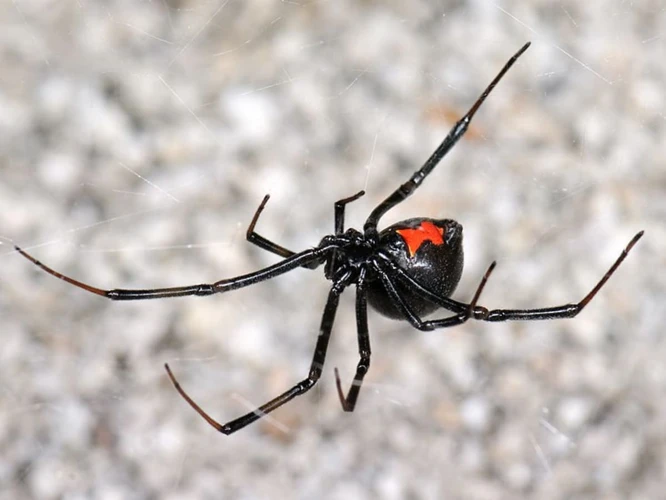
Group living in black widow spiderlings can have both benefits and costs. On one hand, being part of a group can provide better protection against predators. The presence of more individuals increases the chances of detecting predators and sounding the alarm to signal danger. This can lead to faster responses and increased survival rates. Additionally, grouping together can provide better chances of catching prey, as multiple spiders can contribute to catching larger prey that would be too difficult for an individual to handle alone.
On the other hand, there are also costs to group living. Competition for resources can lead to increased aggression, with larger or dominant individuals monopolizing access to food or mates. In some cases, this can lead to cannibalism, where weaker or younger spiderlings are killed and eaten by their stronger siblings. This can be a significant cost of group living, as it reduces the number of potential adult spiders that can emerge and reproduce.
Group living can also increase the risk of disease transmission and parasitism. Close contact with infected individuals can lead to the spread of diseases. Parasites can also more easily transfer from one individual to another in a group setting, increasing the risk of infection or infestation.
The benefits and costs of group living in black widow spiderlings depend on various factors such as the availability of resources, social dynamics, and environmental conditions. Research into the social behavior of spiderlings can provide valuable insights into the evolution and survival strategies of these fascinating creatures.
For more information on how spider moms can help black widows survive, check out our related article:
Spider Mom Helps Black Widow Survive
Additionally, check out our article on the differences between male and female black widows:
Reproduction and Competition among Spiderlings
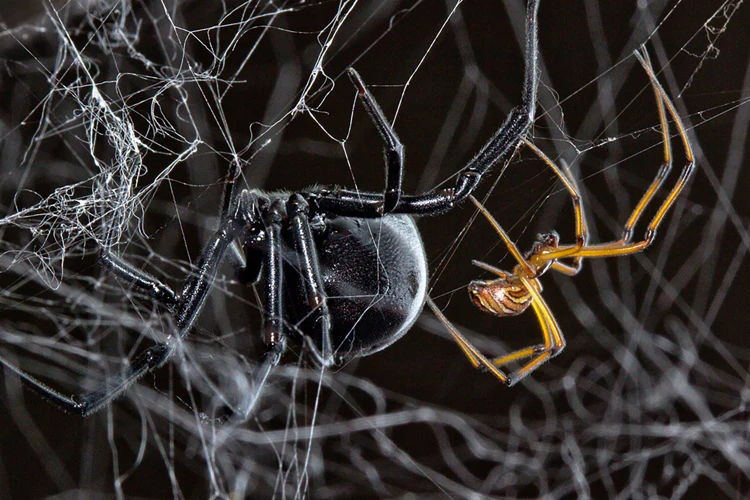
As black widow spiderlings continue to mature and develop, they face increasing competition for resources and opportunities to mate. The dynamics of reproduction and competition play a crucial role in shaping the social behavior of these creatures. In this section, we will delve deeper into the mechanisms behind sexual cannibalism and incest avoidance, as well as the competition for resources and mating opportunities that shapes their behavior. Join us as we explore the intricate power struggles that take place within black widow spiderling communities.
Sexual Cannibalism and Incest Avoidance
When it comes to reproduction, black widow spiderlings face unique challenges that shape their social behavior. One of the most intriguing phenomena in their mating patterns is sexual cannibalism, a behavior in which females eat males during copulation. This may seem like a cruel and pointless act, but research has shown that it can actually benefit the female by providing her with additional nutrients to support her reproductive efforts.
Incest avoidance is another important factor in black widow spiderling social behavior. To avoid genetic inbreeding and maintain a healthy functioning population, spiders usually avoid mating with close relatives. In fact, female black widows are known to release pheromones that repel their brothers and other close relatives to prevent incestuous mating. However, this behavior is not foolproof, as male black widows may still attempt to mate with their sisters or other close relatives if a non-related mate is not readily available.
To further illustrate the complexity of black widow spiderling social behavior, we can create a table summarizing the key factors involved in sexual cannibalism and incest avoidance:
| Sexual Cannibalism | Incest Avoidance | |
|---|---|---|
| Definition | Female spiders eating males during copulation | Prevention of mating between close relatives |
| Benefit | Additional nutrients for female to support reproduction | Maintaining genetic diversity and preventing inbreeding |
| Challenge | Males risking their lives to fertilize females | Siblings and close relatives may have similar pheromones |
| Strategy | Male spiders attempting to escape after copulation | Female spiders releasing pheromones that repel relatives |
Despite the risks and challenges involved, black widow spiderlings have evolved fascinating strategies to cope with sexual cannibalism and incest avoidance, suggesting that their social behavior is shaped by complex and dynamic factors that are still being uncovered by researchers today.
Competition for Resources and Mating Opportunities
In the quest for survival and successful reproduction, black widow spiderlings engage in intense competition for resources and mating opportunities. This competition shapes their social behavior and ultimately influences their chances of survival. The following are some of the ways in which competition plays a vital role in the lives of black widow spiderlings:
- Food Competition: Black widow spiderlings compete for food, particularly the insects that make up their primary diet. This competition can be intense, especially when resources are limited. As a result, the stronger and more aggressive spiderlings often dominate the food resources, leaving weaker and smaller spiderlings with little to no food. This can have long-term consequences, as malnourished spiderlings are less likely to survive to adulthood.
- Mate Competition: Black widow spiderlings, like many other organisms, engage in competition for mating opportunities. Male spiderlings compete for access to female spiderlings, with the largest and strongest males often being the most successful. However, competition for mates can also lead to aggression and cannibalism, with females often resorting to eating their potential mates if they are not satisfied with them.
- Territorial Competition: Black widow spiderlings may try to establish territories or defend existing ones, particularly when it comes to their preferred feeding or mating sites. This can lead to clashes with other spiderlings, as they fight for control of the same resources. Territorial disputes often involve aggressive behavior, with larger and stronger spiderlings usually emerging victorious.
Competition for resources and mating opportunities is an integral part of the social behavior of black widow spiderlings. The struggle for survival and reproduction drives this competition, shaping the interactions between spiderlings and influencing their chances of survival and successful mating. Understanding the dynamics of competition in black widow spiderling populations could help researchers better comprehend the evolution of social behavior in these fascinating creatures.
Factors Affecting Social Behavior
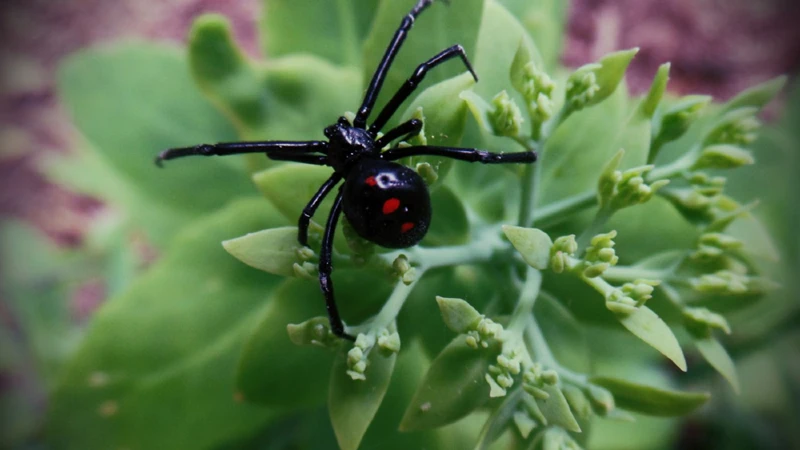
The social behavior of black widow spiderlings is influenced by a complex array of factors that operate at both the individual and group levels. Understanding these factors is important for predicting how black widow spiderlings might respond to their environment and how they interact with one another. In this section, we explore some of the factors that affect the social behavior of black widow spiderlings and shed light on the underlying mechanisms that drive their social interactions. From environmental and social factors to genetics and developmental plasticity, there are a wide range of factors that contribute to the formation and dynamics of black widow spiderling groups.
Environmental and Social Factors
The social behavior of black widow spiderlings is heavily influenced by a variety of environmental and social factors. Here are some of the most important factors to consider:
1. Resource availability: The availability of food and shelter can greatly affect the social behavior of black widow spiderlings. In environments with limited resources, spiderlings may be more aggressive and compete more intensely for resources.
2. Population density: When population density increases, there is a greater likelihood of social interaction and cooperation among spiderlings. However, high population density can also lead to increased aggression and competition for resources.
3. Climate conditions: The climate can also play a role in social behavior. For example, in areas with more extreme temperatures, spiderlings may be more likely to engage in group living to regulate their body temperature.
4. Predator pressure: The presence of potential predators can impact the social behavior of black widow spiderlings. In the presence of predators, spiderlings may be more likely to aggregate and cooperate to deter predation.
5. Parental presence: The presence of the mother or other family members can also influence social behavior. In some cases, the mother may provide protection or resources that allow spiderlings to live more cooperatively.
It is also important to understand that environmental factors can interact with social factors to produce complex patterns of behavior. For example, resource availability may influence the degree of competition among spiderlings, while population density may influence the degree of cooperation. By studying these interactions, researchers can gain a more complete understanding of the social behavior of black widow spiderlings and other cooperative species.
Genetics and Developmental Plasticity
When it comes to understanding social behavior among black widow spiderlings, it’s important to take into account the role of both genetics and developmental plasticity. Both of these factors can influence spiderlings’ tendency to engage in social behaviors, whether alone or in groups. Here are some key points to keep in mind:
- Heritability of social behavior: Studies have found that some aspects of social behavior among black widow spiderlings may be genetically influenced. For example, researchers have identified specific genes that may impact web-building or aggression tendencies in spiderlings. However, the extent to which genes versus environmental factors shape social behavior is still being explored.
- Developmental plasticity and social behavior: Another key factor to consider is the role of developmental plasticity, or the ability of an organism to adjust its behavior and physiology in response to environmental cues. For example, spiderlings that are raised in isolation may display different social behaviors than those raised in groups. This suggests that social experiences early in life may shape long-term behavioral tendencies in spiderlings.
- The interplay between genetics and environment: Ultimately, social behavior among black widow spiderlings likely results from a complex interplay between genetic factors and environmental experiences. Researchers are continuing to investigate the specific mechanisms that underlie social behavior in these spiders, with the hope of shedding light on the broader evolutionary and ecological significance of animal sociality.
The study of genetics and developmental plasticity in relation to black widow spiderling social behavior underscores the complexity of animal behavior and the many factors that can shape it. By considering these factors, researchers can gain a deeper understanding of how spiders interact with one another and the world around them.
Implications for Conservation and Research
The social behavior of black widow spiderlings has important implications for their conservation and for future research studies. These implications relate to understanding the ecological and evolutionary factors that influence the development of social behavior in spiders.
Conservation: Black widow spiders are commonly found in various regions of North and South America and have been listed as endangered in some areas. The identification of social behavior in spiderlings can suggest new ways to protect and preserve these arachnids and their habitats. Understanding how environmental factors impact spiderling sociality can reveal how specific conservation strategies can be developed to protect these spiders.
Research: The social behavior of black widow spiderlings provides an important avenue for researchers to study the evolution of social behavior in spiders which can in turn provide insights into the evolution of group living behavior in other animal species. Notably, the study of black widow spiders can help to reveal how genetic, developmental, ecological, and social factors shape the social behavior of spiderlings.
To further expand on research implications, the study of spiderlings may provide opportunities to better understand the development of social behavior in arachnids and invertebrates, as well as to identify how such behavior may be shaped by different ecological and environmental cues. The potential factors that influence social behavior in spiders could include the availability of resources, presence of predators, as well as other individual and social factors. Additionally, understanding the neural mechanisms that control social behavior may reveal the processes that underlie the evolution of sociality in other organisms.
In essence, the social behavior of black widow spiderlings is a crucial subject for both conservation and research efforts. By studying these spiders, we can gain insights into how their social behavior arises, evolves, and is maintained, which can then readily apply to other related species, either arachnids or invertebrates as a whole.
Conclusion
After delving into the intricate social behavior of Black Widow Spiderlings, it is clear that they are not just simple, solitary creatures. Instead, these spiders exhibit complex communication, coordination, and competition in both solo and group living situations. However, there are both benefits and costs to social behavior, with the potential for increased protection and resource acquisition countered by heightened competition and risk of cannibalism.
It is also important to consider the multitude of factors that can impact the social behavior of these spiders, including genetics, developmental plasticity, and environmental factors. These complexities make it crucial for researchers and conservationists to continue studying Black Widows in order to better understand their behavior and promote their survival.
Furthermore, as these spiders have a significant reputation in popular culture, it is important to acknowledge that much of what is portrayed about them is unfounded or exaggerated. Rather than being mindless killers, Black Widow Spiderlings demonstrate a considerable degree of social intelligence and complexity that warrants further exploration.
In conclusion, the social behavior of Black Widow Spiderlings is a fascinating and multi-faceted topic that challenges many preconceptions about the species. By continuing to study and protect these spiders, we can deepen our understanding of their behavior and make strides towards their conservation.
Frequently Asked Questions
What is the average lifespan of a Black Widow Spiderling?
The average lifespan of a Black Widow Spiderling is around 1 to 1.5 years.
Do Black Widow Spiderlings stay with their mother after hatching?
No, Black Widow Spiderlings are solitary and leave the mother immediately after hatching to find their own shelter and prey.
Do Black Widow Spiderlings exhibit cannibalistic behavior towards each other?
Yes, it is common for Black Widow Spiderlings to exhibit cannibalistic behavior towards each other, especially when resources are scarce.
How do Black Widow Spiderlings communicate with each other?
Black Widow Spiderlings communicate with each other through visual and tactile cues, such as body postures and vibrations.
Are there benefits to group living for Black Widow Spiderlings?
Yes, group living can provide benefits for Black Widow Spiderlings, such as increased protection and access to resources.
What are the risks of group living for Black Widow Spiderlings?
The main risk of group living for Black Widow Spiderlings is increased competition for resources and mates, which can lead to cannibalism and aggression.
How do Black Widow Spiderlings avoid incestuous mating?
Black Widow Spiderlings avoid incestuous mating through pheromone cues and mate recognition systems.
What factors affect the social behavior of Black Widow Spiderlings?
Environmental factors, such as resource availability and predator presence, as well as genetic and developmental factors can affect the social behavior of Black Widow Spiderlings.
Why is studying the social behavior of Black Widow Spiderlings important?
Studying the social behavior of Black Widow Spiderlings can provide insights into the evolution of social behavior in spiders and other organisms, as well as inform conservation efforts and pest management strategies.
What are some future research directions for studying Black Widow Spiderling behavior?
Future research directions for studying Black Widow Spiderling behavior could include investigating the neural and physiological mechanisms underlying social behavior, as well as examining the effects of anthropogenic factors such as climate change and habitat destruction.

